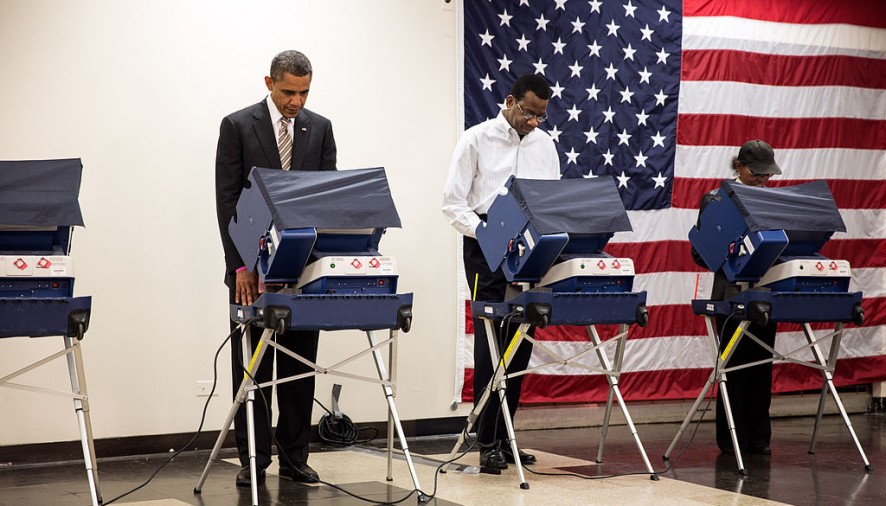You walk into the voting booth and before you are your choices. You’ve weighed the facts, considered each candidate for their merits yet you remain uncertain about your choice. For some unknown reason you drift towards one candidate over the other. You can’t put your finger on exactly why, but the vote is cast. This could be down to some supernatural force or, more likely, it could be explained using simple psychology.
Whether it’s a general election, presidential race or the battle to be on the student executive, most elections involve persuasive arguments, eye catching marketing and the occasional debate to help sway a voter’s opinion. Ideally this would allow elections to be decided by an educated public, rationally siding with the candidate they find most agreeable. The one problem with this lies in the fact that we, as human beings, are not always rational; more often than not it is subconscious thought, rather than objective reasoning, that influences our decision making. This is one of the reasons politicians possess a large staff of “image consultants” and “spin doctors,” whose job it is to understand how psychology works and influence your opinion accordingly.
One of the most powerful influences psychology can have on voting involves the use of negative suggestion to create and reinforce negative images of competing candidates. One way to achieve this is through the use of targeted poll questions, which are designed to create disinformation about a candidate using hypothetical questions. When this type of survey is undertaken the information which is collected is not of importance; rather the questions serve to highlight negative traits that then remain in the voters’ minds. While most people would claim they wouldn’t be affected by this, the Journal of Consumer Research indicates otherwise. They asked undergraduates to vote for one of two potential candidates for a positon of office. Candidate A was designed to be the more likeable candidate, with 81% to 89% of students voting for him over his opponent after viewing both candidate profiles. However, when students viewed the same profile but prior to view they were asked a hypothetical negative question about the candidate, only 38.9% voted for Candidate A despite the fact that the question was worded as a hypothetical and not fact. Thus far it remains unclear why this “negative bias” remains in people heads and is capable of influencing the way they vote, however it is thought that people have a tendency to preferentially remember negative information over positive. This is one of the many reasons that in debates candidates will spend as much time criticising one another’s personal lives as they will their political stance.
An additional factor which plays a role in a candidate’s electoral success is the physical attractiveness a candidate displays. It may seem superficial, but evidence indicates that as a species we are drawn to the physically attractive and strong; a judgement which evolutionarily dates back to when physical strength was key to survival. In pre-modern societies the best leader was seen to be the person who displayed the greatest physical strength and was capable of defending your tribe. Furthermore, people often associate physically attractiveness and strength with other desirable characteristics, including intelligence. For instance, in 2003 the Princeton psychologist Alexander Todorov showed pairs of portraits to a thousand people, asking them to rate the competency of each person based solely on their appearance. Unbeknown to the test subjects, they were looking at previous years candidates for the House of Representatives. It was determined that the participants’ responses to the question that looked more competent mirrored the actual election outcomes. This led to the conclusion that in situations where we think we are making well-reasoned voting decisions, we are actually driven, at least in part, by our instinctive reactions to candidate’s appearance. While we like to believe that we are above judging people based on their appearance, that is not always the case; using the presidential candidates as an example, Donald Trump has recently placed a great deal of emphasis on the health displayed by Hilary Clinton, questioning whether she is fit for office. While this tactic may seem petty, it may be enough to sway the occasional voter in his favour.
Finally one of the most well-known and effective methods to alter a candidate’s appearance, in the eyes of voters, is the use of colour. While political parties tend to rely on a specific colour to represent their party, the colours which candidates choose to wear can also be used to manipulate our perception of them. For instance, in the past David Cameron’s choice of colour palate has relied on various tones of blue or grey – this has been seen not only in his choice of suit, but also his ties. Generally people that wear blue are perceived as more professional and competent. This is supported by evidence which indicates that wearing blue to a job interview is statistically more likely to get you the job. In contrast, wearing red is often seen as bold and suggests that you are a natural leader. Once again, during the recent presidential debates Donald Trump chose to wear a blue tie, suggesting he wanted to be seen as professional, while Hilary Clinton donned a red suit, indicating she wanted to appear confident and powerful.
Overall, it is obvious that there are multiple ways that politicians can utilise psychological tactics in an attempt to manipulate your perception of them. Admittedly, if you have strong political views it is unlikely your opinion will be swayed by these relatively minor details. Just be aware that as logical as you think you are when making a decision, your subconscious might be doing more than you realise.
Steve Gibney
(Image courtesy of Pete Souza)

